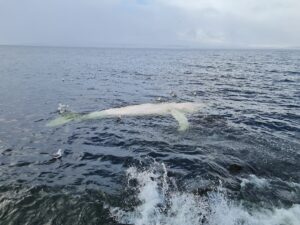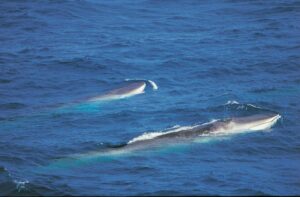Then it's time for discussion no. 3 about the most common species of whales in Skjálfandaflói. This time we introduce Hrefna to the game.
Latin name: acutorostrata Balaenoptera
English name: Minke whale
Icelandic name: Hrefna
Average lifespan:
50 year
Food choices: Light eaters and small fish
Size: 6 – 10 meters
Weight:
10 tons
Killer whales are among the smallest minke whales in existence. There are two types of killer whales, northern killer whales and southern killer whales. The former can be found in many places around Iceland.
Humpback whales, like other right whales, use a "filtering method" for food intake. They mostly live singly rather than in groups. The maximum swimming speed is about 40 km/h and they usually swim a distance of 5-25 km every hour. Hrefn are attacked by killer whales, but these chases can last up to an hour. Minks are also known for their foul-smelling breath, which has resulted in the undesirable nickname "stinky minke". Stingrays usually dive for 20 minutes, although the average dive time is only 3-5 minutes. They usually do not show their spurs when they dive.
Minke become sexually mature when they reach 6 years of age. Like most species of ski whales, they migrate at the end of summer to warmer areas in the southern oceans. They use the warm sea to reproduce and have offspring, but the gestation period of Hrefna is 10 months. The pregnant females therefore leave earlier for wintering in the southern seas than the other whales. The offspring are born about 2,5 meters long and weigh 450 kg. During the first 6 months of life, they double in size.
Killer whales are one of the whale species that are still allowed to be hunted, for example in Japan where the authorities have allowed the hunting of 52 whales in 2019. The southern killer whale is listed as endangered according to the Red List of the International Organization for Conservation of Nature.
Manatees in Skjálfandaflói can be seen all year round, but their number and the probability of seeing them is nevertheless decreasing. Is the warming of the sea to blame, which causes the prey to look for colder seas north of Iceland. Hrefnan has therefore been moving north in line with this in recent years.

